Nailbed injuries can be a painful and disruptive experience that impacts your daily life. Whether you’re a professional athlete or an avid gardener, a nailbed injury can make it difficult to perform even the simplest tasks, such as buttoning a shirt or tying your shoes. At the Sydney Orthopaedic Surgeon Clinic, we understand the impact that nailbed injuries can have on your life, and we are here to help you get back to doing what you love.
Our clinic is led by Dr Stuart Kirkham, an experienced orthopaedic surgeon and hand specialist who is dedicated to providing personalised care to each patient. Whether you have a minor nailbed injury or a more severe case that requires surgical intervention, we offer a range of treatment options tailored to meet your unique needs.
With Dr Kirkham’s expertise, we can offer non-surgical treatments such as splinting, pain management, and wound care to promote healing and minimise pain. For more severe cases, we offer surgical treatments such as nailbed repair or nail removal to restore function and prevent complications. No matter what your needs are, our team is here to provide the care and support you need to recover.
If you’re concerned about a nailbed injury, don’t hesitate to reach out to us. Contact us today to schedule a consultation with Dr Kirkham, and take the first step towards recovery and improved quality of life.
Anatomy Related To Nailbed Injuries
The nailbed is a thin layer of tissue located beneath the fingernail or toenail that helps support nail growth and protects the underlying bone. It is responsible for providing the nail with vital nutrients and oxygen that are necessary for it to grow and stay healthy. The nailbed is made up of two main layers: the germinal matrix and the sterile matrix.
The germinal matrix is located at the base of the nail, and it is where the nail’s growth occurs. This area is responsible for producing new nail cells, which then push the existing nail forward as they grow. The sterile matrix, on the other hand, is located above the germinal matrix and is responsible for the final shape and texture of the nail.
Nails themselves are made up of a hard protein called keratin. They are attached to the nailbed by a thin layer of tissue called the nail matrix. The nail matrix is the source of the nail’s growth and plays a vital role in maintaining the nail’s health and appearance.
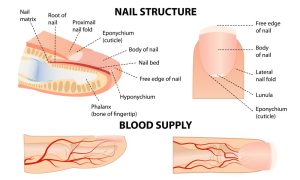
The surrounding tissue of the nailbed includes the nail plate, nail fold, and nail groove. The nail plate is the visible part of the nail that extends beyond the finger or toe. The nail fold is the skin that surrounds the nail on three sides, while the nail groove is the indentation on either side of the nail plate that separates it from the nail fold.
Blood vessels and nerves play a crucial role in the nailbed and surrounding tissue. These Blood vessels provide vital nutrients and oxygen to the nailbed, while nerves provide sensation and transmit signals to the brain. With such a complex network of nerves, blood vessels, tissue and underlying bone, any injury or damage to these structures can cause great pain, discomfort, and loss of function that can be very inconvenient.
Understanding the anatomy of the nailbed and surrounding tissue is crucial in making a personalised treatment plan for nailbed injuries. At the Sydney Orthopaedic Surgeon Clinic, we take a comprehensive approach to care, and Dr Stuart Kirkham has the expertise and experience necessary to provide you with the best possible treatment options. Don’t hesitate to contact us today to schedule a consultation and learn more about how we can help you recover from nailbed injuries.
Causes and Risk Factors For Nailbed Injuries
Nailbed injuries can be caused by a wide range of factors, with trauma being the most common cause. Trauma can occur due to accidents, falls, sports injuries, and crushing injuries. For example, a person may injure their nailbed while playing basketball and accidentally hitting their finger on the ball or while doing manual labour and accidentally hitting their finger with a hammer.
Infections are another cause of nailbed injuries. Bacterial or fungal infections of the nailbed can lead to inflammation, pain, and nail matrix damage. Certain autoimmune diseases, such as psoriasis or lupus, can also affect the nailbed and cause nail matrix damage. Tumours can also lead to nailbed injuries, although they are rare. Tumours that develop under the nailbed can cause pain, swelling, and discolouration of the nail.
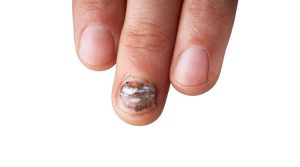
There are several risk factors that can increase the chances of developing a nailbed injury. Age can be a factor, as older adults are more prone to falls and accidents that can result in nailbed injuries. For example, elderly people may be more likely to fall due to changes in balance and mobility, leading to injuries.
Occupational hazards can also increase the risk of nailbed injuries, particularly for those in manual labour jobs that involve the use of tools or machinery. For example, construction workers, carpenters, or mechanics may be at a higher risk of sustaining nailbed injuries due to the nature of their work.
Certain hobbies and activities can also increase the risk of nailbed injuries. For instance, rock climbing or gardening can increase the likelihood of trauma to the nailbed due to contact with rocks or gardening tools.
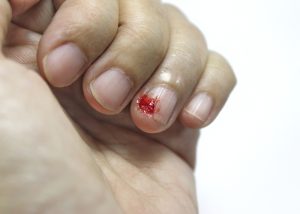
At the Sydney Orthopaedic Surgeon Clinic, we understand the impact that nailbed injuries can have on your daily life. Dr Stuart Kirkham is an experienced orthopaedic surgeon and hand specialist who has extensive experience in treating nailbed injuries caused by a wide range of causes and risk factors. Our team of specialists will work with you to develop a personalised treatment plan that addresses your unique needs and minimises the risk of complications. Reach out to our team today to organise a personal consultation and take the first step in your recovery today.
Symptoms and Identification Of Nailbed Injuries
Nailbed injuries may cause a range of symptoms that can vary in severity depending on the extent of the injury. Common symptoms of nailbed injuries include pain, swelling, and discolouration of the nail. In some cases, the nail may also become separated from the nailbed or have an irregular shape or texture.
Pain is usually the first symptom of a nailbed injury, and it can range from mild discomfort to severe, sharp pain. The swelling and discolouration of the nail that may also occur can result in the nail turning black, blue, or red depending on the extent of the injury.
It’s important to note that some nailbed injuries may not cause immediate pain or symptoms, but they can still cause long-term damage if left untreated. For example, a minor injury to the nailbed can cause a small crack or break that can lead to infection or other complications if not properly treated.
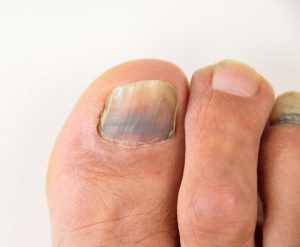
While most nailbed injuries are impossible to ignore, situations may arise in which a nailbed injury can be difficult to identify, especially if the injury is not visible on the surface. However, some signs that may indicate a nailbed injury include persistent pain or discomfort, swelling or redness around the nail, or difficulty moving or using the affected finger or toe. In severe cases, the nail may become detached from the nailbed, or the nailbed may be exposed.

Recognising and identifying the symptoms of nailbed injuries and taking early action is crucial for successful treatment and recovery. At the Sydney Orthopaedic Surgeon Clinic, we understand the importance of prompt and accurate diagnosis, and Dr Stuart Kirkham has all the expertise necessary to provide you with a precise evaluation and diagnosis. With his experience in treating nailbed injuries caused by a wide range of factors, he will work with you to develop a personalised treatment plan to promote healing and prevent further nail matrix damage. Don’t hesitate to contact us to schedule a consultation and kickstart your healing process with experts in the field.
Diagnosis and Imaging Of Nailbed Injuries
Diagnosing nailbed injuries typically involves a physical examination by a medical professional. During the examination, Dr Kirkham will assess the extent of the injury and look for signs of swelling, discolouration, and any other symptoms you may be experiencing. He may also examine the surrounding area for signs of infection or other damage.
In some cases, diagnostic imaging techniques may be necessary to get a better understanding of the injury. X-rays can help diagnose fractures or other bone injuries that may be associated with the nailbed injury. Magnetic Resonance Imaging (MRI) may also be used to evaluate the extent of soft tissue damage, including injuries to the blood vessels or nerves in the area.
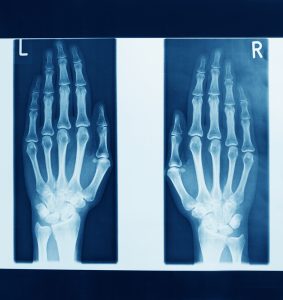
The physical examination process for nailbed injuries typically involves a detailed assessment of the extent of the injury, including the severity of the pain, swelling, and discolouration. Your existing range of motion of the affected finger or toe is likely to be assessed to determine the extent of the injury and the potential impact on functionality.
Diagnostic imaging techniques, such as X-rays or MRI, may be necessary to provide a more detailed view of the injury. X-rays can help diagnose fractures or other bone injuries that may be associated with the nailbed injury. MRI may also be used to evaluate the extent of soft tissue damage, including injuries to the blood vessels or nerves in the area.
At the Sydney Orthopaedic Surgeon Clinic, Dr Stuart Kirkham and his team have great experience in using advanced diagnostic techniques to assess nailbed injuries accurately. The comprehensive evaluations they deliver ensure a thorough physical examination and the use of diagnostic imaging techniques are used to devise the best possible treatment plan that is specific to your individual case.
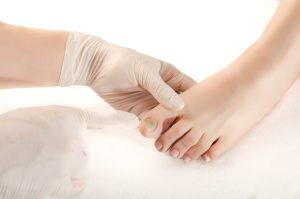
While these tests are important, Dr Kirkham never neglects the fact that it is people he treats, not simply nailbeds. Rest assured that you will receive a compassionate and understanding service that is tailored to your needs, making sure your individual pain levels are addressed accordingly. Don’t suffer on your own any longer, reach out to Dr Kirkham for an effective diagnosis of your nailbed injury that will optimise your recovery.
Treatment Options For Nailbed Injuries
Treatment options for nailbed injuries can vary depending on the severity of the injury and the extent of the nail matrix damage.
Conservative treatments may be recommended for mild injuries that do not require surgical intervention. These treatments may include splinting to stabilise the injured area and pain management medications to reduce discomfort.
Splinting is often used to immobilise the affected finger or toe and prevent further damage. Pain management medications, including over-the-counter or prescription pain relievers, may also be recommended to manage discomfort.
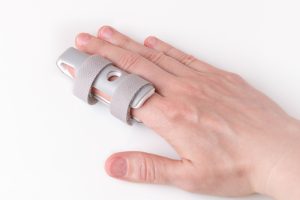
In more severe cases, surgical treatment may be necessary to repair the damaged nailbed and restore function to the finger or toe. Nailbed repair is a common surgical treatment for nailbed injuries and involves repositioning the nail and repairing the damaged nailbed tissue. In some cases, nail removal may be necessary if the nail is severely damaged or if there is a risk of infection.
Dr Stuart Kirkham has extensive experience in treating nailbed injuries, and he understands that every patient’s situation is unique. That’s why we always provide personalised treatment plans that take into account the individual’s specific needs and goals. Whether you require conservative or surgical treatment, we will work with you to develop a plan that promotes optimal healing and recovery. Don’t hesitate to contact us to schedule a consultation and find out which treatment method is most suitable for your injury.
Prevention and Aftercare For Nailbed Injuries
Taking steps to actively prevent nailbed injuries can help reduce the risk of long-term damage and complications. Some tips for preventing nailbed injuries include wearing appropriate protective gear during sports or activities that carry a risk of injury, such as gloves or closed-toe shoes. It’s also important to use caution when handling sharp objects, such as knives or scissors, and to avoid biting or picking at your nails, which can weaken the nailbed and increase the risk of injury.
If you do experience a nailbed injury, proper aftercare is crucial for a successful recovery. Aftercare may include wound care to prevent infection and promote healing, pain management to reduce discomfort, and follow-up appointments with Dr Kirkham to allow him to monitor your progress and ensure your recovery stays on track.
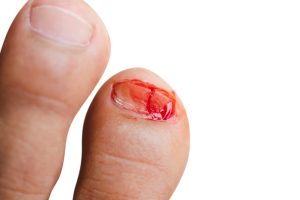
Wound care for nailbed injuries typically involves keeping the affected area clean and dry and changing bandages regularly to prevent infection. Pain management may involve over-the-counter or prescription pain relievers, and ice or heat therapy may also be used to reduce swelling and discomfort.
At the Sydney Orthopaedic Surgeon Clinic, Dr Stuart Kirkham and his team of experienced professionals can provide comprehensive aftercare for nailbed injuries. Our goal is to help you recover as quickly and safely as possible, so you can return to your normal daily activities. If you’ve suffered from a nailbed injury and are yet to receive an effective aftercare plan, reach out to Dr Kirkham for specialised care to restore your nail health today.
The Recovery Process For Nailbed Injuries
The recovery process for nailbed injuries can vary depending on the severity of the injury and the type of treatment received. In general, the recovery process can take several weeks to several months, with full recovery often taking up to six months.
During the early stages of recovery, you may experience a more rigorous process that minimises any potential for further injury. This may include keeping the affected area clean and dry, changing bandages regularly, and taking pain relievers as directed.
As you progress through the recovery process, you may begin to experience challenges such as stiffness, weakness, or limited range of motion in the affected finger or toe. Physical therapy can be an effective way to address these challenges and promote optimal recovery.
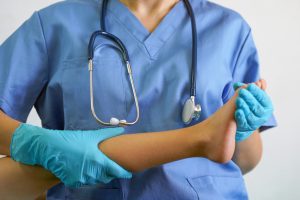
It’s important to closely follow Dr Kirkham’s advice regarding wound care and pain management advice and guidance throughout the recovery process, as this will ensure optimal healing and minimise the risk of complications. Failure to follow medical advice or engage in appropriate aftercare measures can lead to delayed healing or other complications.
Over his many years of practice, Dr Stuart Kirkham has successfully resolved a number of nailbed injuries, and this prior experience allows him to provide expert guidance and support throughout the recovery process. Dr Kirkham is committed to helping you achieve optimal healing and recovery, so you can return to your normal daily activities as quickly and safely as possible. Don’t hesitate to contact Dr Kirkham to schedule a consultation and learn more about the recovery process for all types of nailbed injuries.
Possible Complications Of Nailbed Injuries
Nailbed injuries can be painful and inconvenient, and if not treated properly, they can lead to complications. Some potential complications of nailbed injuries include infection, abnormal nail growth, or nerve damage.
Infection is a common complication of nailbed injuries and can occur when bacteria enter the wound. Signs of infection include redness, warmth, swelling, and increased pain or tenderness around the affected area. Proper wound care, including cleaning the wound and changing bandages regularly, can help minimise the risk of infection.
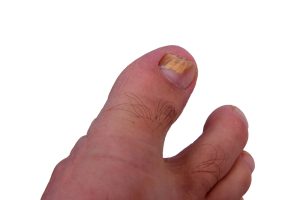
Abnormal nail growth can also occur following nailbed injuries. This can result in a deformed or misshapen nail, which can be unsightly and cause discomfort. If abnormal nail growth occurs, surgical intervention may be necessary to correct the issue.
Nerve damage is another potential complication of nailbed injuries. This can result in numbness, tingling, or reduced sensation in the affected finger or toe. In some cases, nerve damage may be permanent. Proper treatment and care can help minimise the risk of nerve damage.
To minimise the risk of complications, it’s important to seek medical attention promptly following a nailbed injury. Proper wound care, including keeping the affected area clean and dry, changing bandages regularly, and taking pain relievers as directed, can help promote optimal healing and minimise the risk of infection.
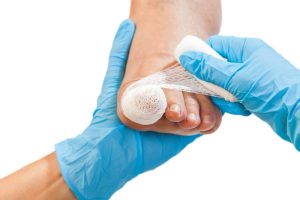
Dr Stuart Kirkham and his team of experienced professionals can provide unique treatment plans that take into account your individual needs and help minimise the risk of complications associated with nailbed injuries. Our goal is to help you recover as quickly and safely as possible, so you can continue enjoying your daily activity with the peace of mind that complications and recurrence of the injury are highly unlikely to occur. Don’t hesitate to contact us to schedule a consultation and learn more about how we can help you recover from nailbed injuries while reducing the risk of complications.
Are You Concerned About Nailbed Injuries?
If you’re experiencing pain, swelling, or other symptoms related to a nailbed injury, it’s important to seek medical attention promptly. Nailbed injuries can be painful and inconvenient, and if not treated properly, they can lead to complications.
Dr Stuart Kirkham and his team of experienced professionals at the Sydney Orthopaedic Surgeon Clinic are dedicated to providing effective and personalised care to every patient. Whether you’re experiencing mild discomfort or severe pain and limited mobility, we are here to help.
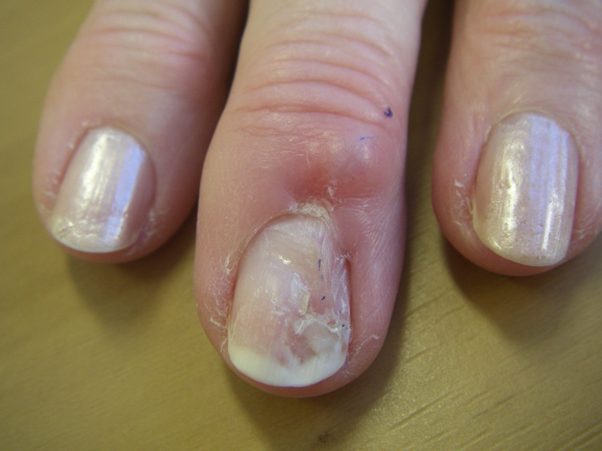
If you’re concerned about a nailbed injury, don’t suffer in silence. Contact us today to schedule a consultation with Dr Stuart Kirkham and take the first step towards improved mobility, reduced pain, and a better quality of life. Our team can provide a comprehensive assessment and develop a personalised treatment plan to meet your unique needs.
Frequently Asked Questions
1. How long does it take for a nailbed injury to heal?
The healing time for a nailbed injury can vary depending on the severity of the injury and the type of treatment received. In general, mild to moderate injuries can take several weeks to a few months to fully heal, while more severe injuries may take up to six months or longer. During the healing process, it’s important to follow your healthcare provider’s advice regarding wound care, pain management, and physical therapy to promote optimal healing.
2. Can a nailbed injury cause permanent damage?
In some cases, nailbed injuries can cause permanent damage, particularly if the injury is severe and involves damage to underlying tissues or structures such as nerves or blood vessels. Nailbed injuries can also lead to abnormal nail growth or deformity. However, with prompt and appropriate treatment, the risk of permanent damage can be minimised.
3. Is it possible to prevent nailbed injuries in high-risk occupations or hobbies?
While it may not be possible to completely eliminate the risk of nailbed injuries in high-risk occupations or hobbies, there are steps that can be taken to reduce the risk of injury. These may include wearing appropriate protective gear, such as gloves or closed-toe shoes, using caution when handling sharp objects, and avoiding biting or picking at nails. It’s also important to take breaks and rest regularly during activities that place stress on the fingers or toes.
4. How can I tell if my nailbed injury is healing properly?
Signs that a nailbed injury is healing properly may include reduced pain and swelling, improved range of motion in the affected finger or toe, and the formation of new nail growth. It’s important to follow your healthcare provider’s advice regarding wound care and physical therapy to ensure optimal healing. If you have any concerns about the healing process, don’t hesitate to contact your healthcare provider.
5. What should I do if I suspect an infection in my injured nailbed?
If you suspect an infection in your injured nailbed, it’s important to seek medical attention promptly. Signs of infection may include redness, warmth, swelling, and increased pain or tenderness around the affected area. Your healthcare provider may prescribe antibiotics or other medications to treat the infection, and may also provide guidance on wound care and pain management. It’s important to follow your healthcare provider’s advice to ensure that the infection is properly treated and to minimise the risk of complications.
6. Will my damaged nailbed grow back?
Yes, a damaged nail bed has the potential to regrow and recover over time. However, the regrowth process can be slow, and the outcome may vary depending on the severity of the injury and the effectiveness of the treatment provided. Dr. Stuart Kirkham, as a specialist orthopaedic surgeon, can evaluate your specific case and offer insights into the expected regrowth and healing process. While the nail may take several months to fully regrow, with proper care and attention, a functional and healthy nail is attainable in many cases.
7. Why are nailbed injuries so painful?
Nail bed injuries are often painful because the nail bed is rich in nerve endings and sensitive tissue. When the nail bed is damaged or exposed due to an injury, the nerves become irritated and send pain signals to the brain, resulting in significant discomfort. Additionally, the fingertip area is crucial for touch and manipulation, making the pain more noticeable and disruptive to everyday activities. Seeking timely medical attention from a specialist like Dr. Stuart Kirkham is essential to assess and manage the pain associated with nail bed injuries effectively.
8. Can I prevent nail bed injuries?
While accidents can happen, certain precautions can reduce the risk of nail bed injuries. Avoid putting excessive pressure on your fingertips and use appropriate hand protection when engaging in activities with potential injury risks. Trim your nails regularly to prevent them from becoming too long and prone to trauma. If you participate in sports or activities that often cause nail injuries, consider wearing protective gloves. Being mindful and cautious can go a long way in preventing unnecessary nail bed injuries.
References
- National Library of Medicine (Nail bed injuries and deformity of nails)
- Medline Plus (Nail Injuries)
- Harvard Health Publishing (Nail Trauma)
- Better Health (Nails – Fingernail and Toenail Problems)


